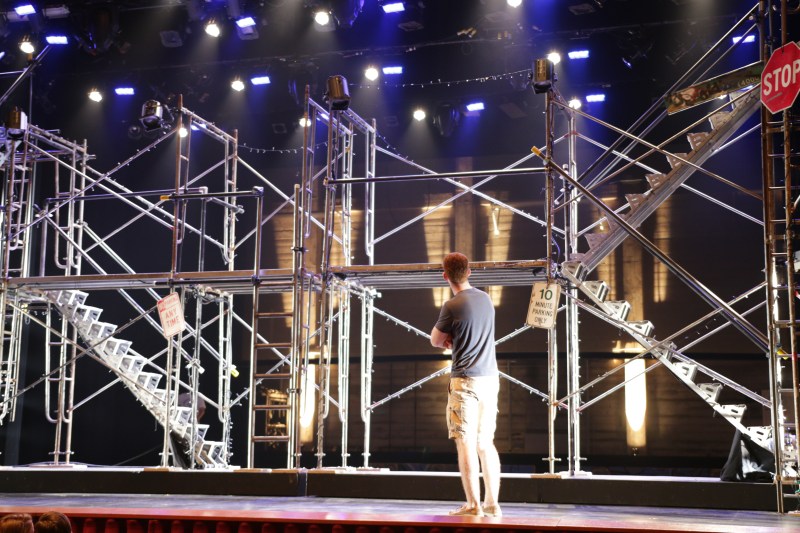Grimy metal bars tower overhead. A stoplight, unlit, hangs solemnly from a nearby platform. The backstage of Memorial Auditorium is hushed and dark, as if any noise made — sans the presence of the talented actors comprising the cast of Ram’s Head’s production of “Rent” — might cause this world to collapse.
It is here that Michael Tucker ‘18, automation designer and technical director for “Rent,” walks me through his vision for creating the incredibly detailed, automated set that is sure to take “Rent” to new heights, just as the LED light board did for “Hairspray” last year.
Tucker, a mechanical engineering major double-minoring in computer science and theater and performing arts studies (TAPS), is responsible for both designing and building the automated set: two towers comprised of metal scaffolding atop platforms, all attached to a motor controlled by the crew through computer programming.
When I ask about his interest in theater, Tucker doesn’t shy away from self-deprecation.
“I had stage fright, so I worked on tech,” Tucker laughs.
After his initial forays into theater in middle school and, later, high school, Tucker got involved with theater at Stanford by doing lighting for Gaieties 2014, “The Original Winter One Acts,” “Equus” and “Hairspray.”
“Once you get sucked in with one show,” he says with a smile and shrug, “you’re sucked in for the rest.”
“Rent” follows a group of struggling artists in New York City, impoverished and blighted by the presence of HIV/AIDS.
“My inspiration was this gritty New York atmosphere,” Tucker says. “New York in the ’80s and ’90s was this dirty, grungy place.”
Tucker implemented this vision by making the set look like an “urban, run-down” city street, complete with dirty, rusted ladders and platforms “to create fire-escape-like imagery.” Smaller details such as stoplights, street signs and a blinking “Walk/Don’t Walk” light add to the metropolitan feel. By strongly evoking the imagery of impoverished New York, the set makes the characters’ struggles all the more vivid.
The physical movement of the set, on the other hand, not only accentuates the imagery but also allows for dynamic use by the actors.
“It’s almost like a playground,” says Michael, adding that he wanted choreographer (Jace Casey ‘17) to be able to “play with different levels.”
“I’m very pleased with what the actors have done with the space,” Michael says.
Beyond the exciting exterior, there’s a complex technological push that drives the automation forward. The motor system to which the platforms and towers are attached offer two degrees of mobility, allowing the set to move forward, backward and rotate.
“There are some numbers where the actors actually interact with the movement of the scaffolding,” says Michael. “As it moves, it helps create the space, helps you move from one scene to the next.”
By showing visual cues for shifts in the production, the set almost becomes a character of its own, propelling the plot as the actors move with it, around it and in it.
Michael was very happy to be able to apply what he has learned in his physics and engineering classes to a more artistic effect.
“It’s really cool to incorporate technology [into theater],” he says. “With all the technological advances at Stanford, not a lot of it is going to the arts.”
Through this opportunity, Tucker has taken the formulas and concepts from his studies and elevated them to the tangible representation of intangible ideas. The automation is sure to lift “Rent” into a world of motion when the show goes up this Friday in Memorial Auditorium.
Contact Madeline MacLeod at [email protected].
